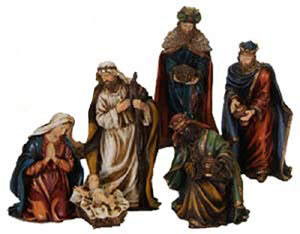The history of the nativity scene represents the true spirit of Christmas with the birth of Christ.  Although Frosty the Snowman, the Grinch, presents, Santa Claus, Christmas trees, garland, and carolers are common words that remind us of the holiday season, it’s important to remember that they came along centuries after Jesus was born.
Although Frosty the Snowman, the Grinch, presents, Santa Claus, Christmas trees, garland, and carolers are common words that remind us of the holiday season, it’s important to remember that they came along centuries after Jesus was born.
Over eight hundred years ago, St. Francis of Assisi showed us the history of the first ever recorded nativity scene. He created his depiction to help children understand the true meaning of Christmas. As is often seen, the meaning of the holiday can be lost among the sea of presents and gift giving. St. Francis wanted to remind the world that the season was about more than just giving or receiving gifts, but that it was about celebrating the birth of a special baby. His depiction of the baby Jesus, Mary, and Joseph was set up in a cave in Greccio, Italy and was used to show the world that the spirit of Christmas was something to be treasured, not materialized.
St. Francis depicted his display with living people, much different to the clay or wooden nativity scenes we see in stores today. What started out so long ago has now become a tradition we see in many homes and yards today. The history of the nativity scene is not lost on the children of the newer generations, but the story of Mary, Joseph, and baby Jesus is still told to remind everyone what Christmas is truly about. The sturdy stable, the lowly manger, and its inhabitants tell the story that is as old as Christmas time itself. These settings can start out small, however many can feature two or more dozen pieces.
We see many different types of cultures and religions around our world, and while many celebrate similar holidays during Christmas time such as Hanukkah or Winter Festival, we see different variations of the traditional nativity scene as well. While the appearance of each display is presented differently with unique styles, colors, and design, each culture represents the same basic underlying pieces: a stable, a manger, a baby, a mother, and a father. Other cultures may use different names, or stories, but in the end each is used to tell us that the holiday isn’t just a time for gift giving or materialistic objects, but it is in fact a time to celebrate the birth of a savior.
